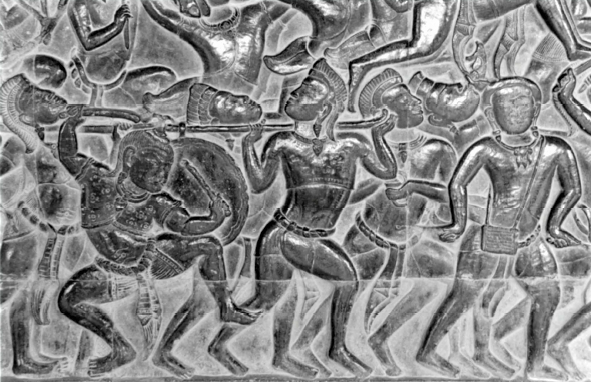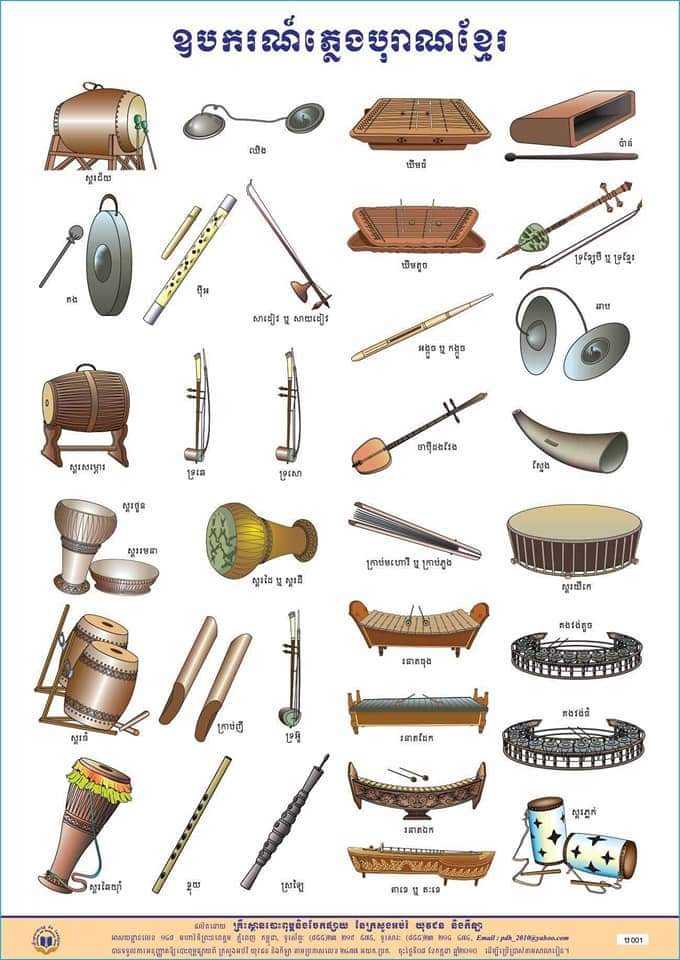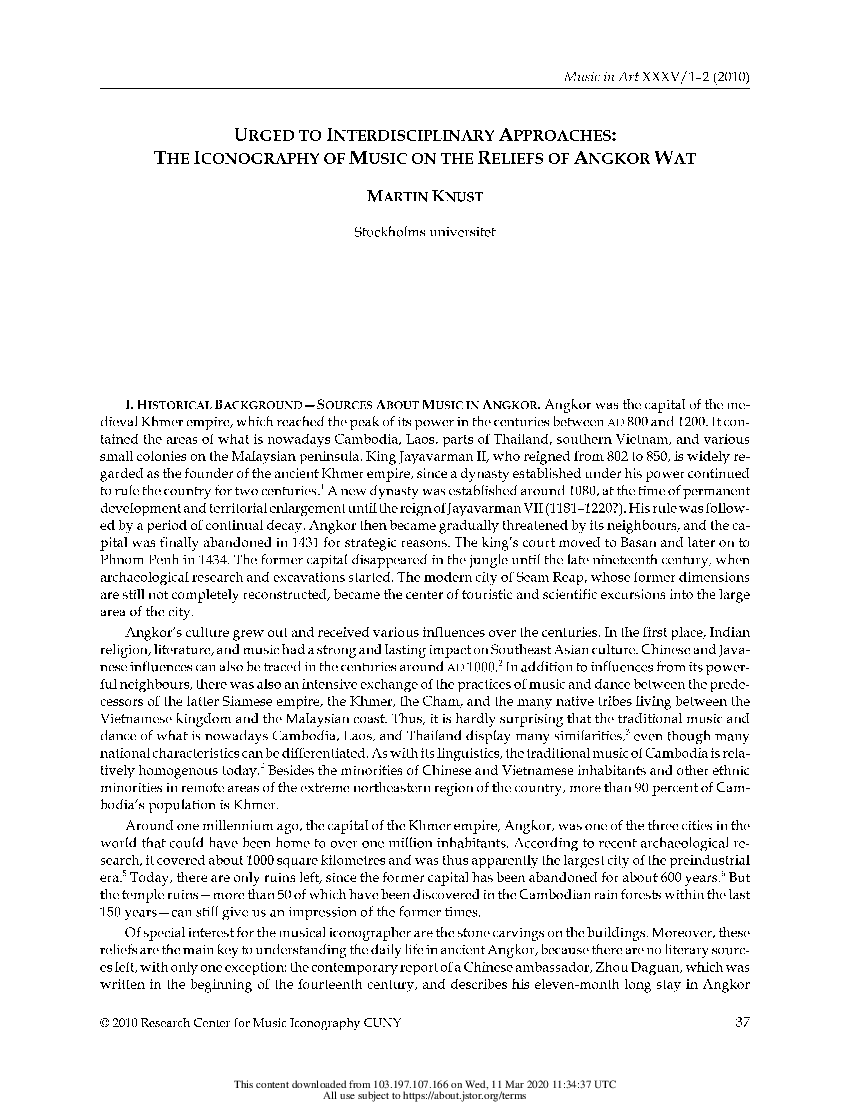The Iconography of Music on the Reliefs of Angkor Wat
by Martin Knust

- Publication
- Music in Art, Vol. 35, No. 1/2, Rethinking Music in Art: New Directions in MusicIconography (Spring–Fall 2010), pp. 37-52 / Research Center for Music Iconography, The Graduate Center, CityUniversity of New York
- Published
- 2010
- Author
- Martin Knust
- Pages
- 16
- Language
- English
pdf 1.6 MB
From the paper: ‘Many musical instruments and ensembles seen on the reliefs are still in use in Cambodia today. For example, chordophones like the tror and the memm — two string instruments which are to be played upright- can be found on the reliefs of the north gallery as well as on the Bayon temple.
‘The memm, a monochord instrument without a resonator, is depicted on a stone carving on the Bayon temple and has been in use since the time of ancient Angkor. Today it is not found among the standard instruments of Khmer traditional music, but is still played by the Kroeung and Tumpuan minorities in the Rattanakiri province, as a solo instrument as well as in ensembles. Eight types of the tror can be found in Cambodia today. They differ in size, tuning, and number of strings.’
Noting the widespread occurence of music bands, the author stresses the ‘martial dimension’ of music in Angkor, adding: ‘Wind instruments similar to trumpets or horns were also played in ensembles during the battles. In his organology of Cambodian traditional instruments ‑the first of its kind- Sam Ang-Sam does not mention any instrument that could be identified with these horns, neither in respect to their construction nor their playing technique. In Musique du Cambodge, a brochure published before the civil war, this instrument is referred to as a sling, which has been replaced in modern times by reed instruments” pour manifester a l’ occasion quelques vieux instincts belliqueux”.’
Photo: Portable gong, cymbals (ching), flute (sralai?) and small drum at Angkor Wat, western gallery, south wing. Bas-relief depicting the battle of Kurukshetra (Author’s photo).
ADB Input: Modern view of Khmer traditional musical instruments:

Tags: bas-reliefs, music, music instruments, Khmer arts, musicology
About the Author

Martin Knust
Senior lecturer in musicology at the Department of Music and Art at Linnæus University in Växjö (Sweden), Martin Knust studied musicology, theology and philosophy in Greifswald, Berlin and Dresden.
Since 2007, he has held appointments and lectureships at the E.-M.-Arndt-University in Greifswald, the Technical University in Berlin, the University of Örebro and the Royal College of Music in Stockholm, and was a Postdoctoral research fellow at the University of Stockholm (2008−2012).
A guest teacher at academic institutions in Switzerland, Finland, Estonia, Portugal and Kenya, his research specializations are: opera and music theatre, North European music (19th century to contemporary), church music from the 16th century, the music of Angkor, music in TV news and documentaries.

